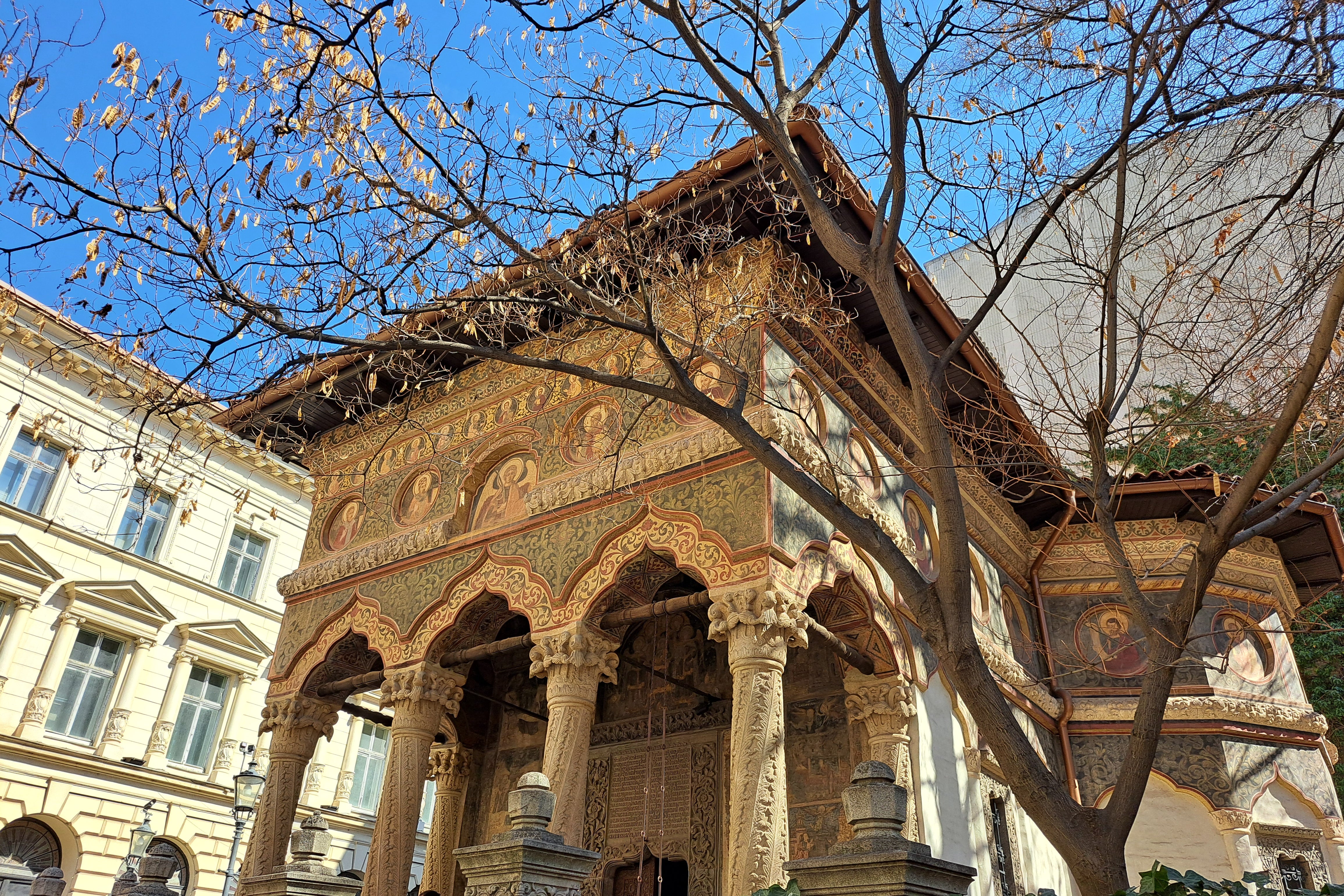Architecture lovers, coffee connoisseurs and historians will find themselves right at home in Bucharest, the Romanian capital.
This vibrant, sprawling city was once known as “little Paris” due to the dominance of French architecture and broad boulevards that characterise the city centre.
In the Old Town and beyond, however, things are different again, with a tantalising mix of mediaeval, neoclassical, communist-era and contemporary buildings.
A large student population, plus a reputation for late-night boozing, makes Bucharest a popular destination to party, but it’s also a city with a rich and complex history worth discovering.
While many visitors use the city as a stop-gap between expeditions to Bran and Peleş Castle and the Carpathian Mountains, this is a city worth spending a weekend getting to know better.
Read more on Romania travel:
Best things to do in Bucharest
Visit the Church of the Stavropoleos Monastery

This diminutive 18th-century church in the heart of the Old Town is one of Romania’s oldest. A perfect example of the Brancovenesc style (a hybrid of Byzantine, Ottoman and late Renaissance), its famed interior features colourful frescoes on the ceiling and walls, alongside religious icons and an intricately carved entrance. Attached to a working monastery occupied by just six nuns who restore old books, vestments and icons for the Vatican, the church is free to enter, but donations are welcomed. The adjacent courtyard also offers a peaceful place to rest and reflect in this busy area. Arrive early to beat the crowds.
Take a guided city tour
A city guide is always a great way to learn more about a new city, particularly if you’re short on time. The Walkabout Free Tour runs a series of city walks throughout Bucharest, in both English and Spanish which, as the name suggests, are free to join, although tips are encouraged. The The ‘Story of Bucharest’ tour provides an excellent overview of the city’s history, from Vlad the Impaler – the medieval prince said to be the inspiration for Bram Stoker’s Dracula – to Communism, architecture and the 1989 revolution.
Embrace the diversity of Bucharest’s architecture
Bucharest’s architecture is a captivating combination of neoclassical, byzantine, modernism, communist and Gothic, ensuring…
Click Here to Read the Full Original Article at The Independent Travel…
